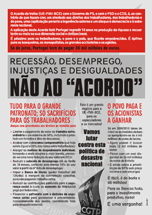"We’re not speculators. We’re investors.” So says the CEO of a real estate trust that recently sunk some $170 million into 22 charter schools.
Which got me wondering: why charter schools? How do they end up looking like sound investments?
It turns out the buyer, Entertainment Properties Trust (EPR), buys real estate nationwide, with its total portfolio worth about $2.6 billion. Over half of that is in megaplex movie theaters. EPR’s stated goal is to be "the nation's leading destination entertainment, entertainment-related, recreation and specialty real estate company."
So why charter schools?
According to EPR's website: "We understand that education is among the most vital experiences of life. Movie theatres and charter schools are very different in many ways, but they are alike in this respect: People choose to patronize them. Our experience in financing specialized real estate enables us to capitalize on properties that people choose to visit."
Huh?
EPR, based in Kansas City, Missouri, consists of sixteen full-time employees. David Brain, President and CEO, says his favorite part of the job is: "solving problems and crafting a deal, and creating something really  new." The deals that EPR crafts follow corporate policy: their tenants must sign a long-term mortgage or something called a triple-net lease where they (the tenants) pay "substantially all expenses associated with the operation and maintenance of the property." EPR’s charter schools have these triple-net leases. EPR is the landlord; the tenant pays for maintaining the buildings and running the classrooms.
new." The deals that EPR crafts follow corporate policy: their tenants must sign a long-term mortgage or something called a triple-net lease where they (the tenants) pay "substantially all expenses associated with the operation and maintenance of the property." EPR’s charter schools have these triple-net leases. EPR is the landlord; the tenant pays for maintaining the buildings and running the classrooms.
In this case, the tenant is a charter-school operator called Imagine. Founded in 2004, it now runs 74 schools from New York to Arizona involving some 36,000 students. Imagine says its goal is “giving the families quality educational choice” by establishing “independently operated public schools.”
Charters are public schools in that the funding comes from state and local school taxes. Imagine gets a certain amount of money for each of its charter students based on the home district’s per-student expenses. The more kids Imagine enrolls, the more money it gets (and the less goes to traditional public schools.) Over the last few years, charters have been successfully attracting more and more students: in central Ohio, for example, Imagine’s budget doubled in 2005-06 and doubled again the next year.
The money pays for teachers, supplies, maintenance, etc. But the problem charter schools have is getting the capital to buy or lease buildings. The vice-president of policy for the National Alliance for Public Charter Schools calls it “the biggest challenge.”
What Imagine did was start a real estate arm: Schoolhouse Finance LLC. In central Ohio, for example, this financial arm purchased a building for $1.5 million with a $4.6 million mortgage. But tying up their money in property ends up limiting how much charter schools can expand. So Imagine turned around and sold its buildings as part of a larger sale-lease transaction with a company called JER Investors Trust Inc. This brought in $5.6 million over Imagine’s original purchase price.
Imagine did a similar deal in Indiana, where its real estate arm made $2.6 million on an old YWCA it bought for $1.9 million. In fact, real estate plays a key role in Imagine’s charter school operations: its investments in buildings went from $19 million in 2005 to $297 million in 2008 -- suggesting that charter schools can turn the challenge of finding classrooms to their advantage.
But why does a company like JER think charter school buildings are a good investment?
JER’s founder, Joe Robert, made his killing in the savings and loan fiasco of the 1980's. Through his connections with the Federal Savings and Loan Association, Robert was awarded the largest contract ever at the time ($120 million in assets) to manage and sell the government’s “troubled” properties. He cleaned up, moving from there to handling assets for himself and other investors. By 1986, he was managing a portfolio worth some $7.5 billion.
Soon, JER was working with Goldman Sachs and the Blackstone Group. Its profits only increased with the various mortgage and investment arrangements that helped create the real estate bubble. As a Washington Post reporter put it, "In those days … it was not unusual for Robert to double and triple his money, sometimes within a matter of months."
A high-flying investor, then, who spent some $77.5 million buying into charter schools. A November 2008 story from Las Vegas helps explain why.
Imagine ran a Nevada school called the 100 Academy of Excellence, which -- based on the local per-student cost -- received about $3 million from the state each year. Half of that, the story reports, went to running the school and half went back to the operator, Imagine. Of the $1.5 million Imagine got, it paid almost all of it -- $1.4 million -- to Joe Robert’s company to cover its lease.
That’s an enormous percentage of your budget to pay for classrooms. (And Imagine has high leases in other schools, like Fort Wayne’s MASTer Academy.) But Imagine is a start-up company. It needs classrooms to draw students -- to expand its brand name until it can become truly profitable.
Meanwhile, it added up to a first-rate investment for JER. The tenant (Imagine) had a dependable source of income through school taxes – and, in the Nevada case, was willing to use most of its revenue to pay the lease. The only catch in the formula is the charter has to educate its students on about half what the state spends per-student.
Imagine makes clear on its website how it expects to deal with this. The corporation demands what it calls “economic sustainability” from all its schools. “Each school must spend less each year on school operations than it receives in revenue from the government and other sources.”
But if the district determines how much it costs to educate a child – and sends money to Imagine based on that formula -- how can the charter school do it for less? In the case of the 100 Academy of Excellence, the principal told a state official that money was saved by letting go veteran (read expensive) teachers and increasing class size (read cost saving).
That guaranteed that the rent got paid. But it didn’t guarantee the quality of the education. 2006-07 test results from the 100 Academy of Excellence fell below national standards and put it on the state’s “Watch List” for failing schools.
The academy’s landlord, JER, didn’t need to bother about such matters. Or about Imagine’s profitability. In fact, though Imagine brought in $131 million in the 2006-07 school year, it ended up losing $2.3 million. But JER hadn’t bought Imagine; it had bought the real estate: the school buildings with Imagine as the tenant. As long as the tenant lived up to its lease, JER had a sweet deal.
It might have continued, except the real estate bubble burst. In two years, JER’s publicly traded stock went from $23 a share to zero – and was “delisted” from the New York Stock Exchange. Robert started selling off his assets, including the charter school buildings. That’s when Entertainment Properties stepped in, buying the properties complete with triple-net leases.
“The charter public schools,” says EPR’s David Brain, “offer lenders/leaseholders a dependable revenue stream backed by a government payer. It’s a very desirable equation.”
So it has been. Nationally, the number of students choosing charter schools has quadrupled in the last decade. In EPR’s words, “people chose to visit them” -- just like mega-theaters. That will continue as long as parents are disappointed in traditional public schools, and operators like Imagine successfully market their brand of “quality” education.
But what if charters don’t provide better test results (as some recent studies have shown)? What if families decide they don’t offer a better choice? Then the numbers will decrease, and the per-student revenue stream will start to dry up.
Other scenarios could also affect revenue. What if tax-payers revolt against their money being used to make a profit for private companies? What if the economy doesn’t recover quickly? Or, using less drastic possibilities, what if the states’ educational funds continue to be strapped: what a director of the National Education Association calls the current “lack of funds overall”? Even with the current stimulus money, many school districts are having to tighten their budgets. And that stimulus money will soon disappear.
It’s easy to imagine what happens once charters fail or start to shrink. The flow reverses: public schools are flooded with returning students. But now veteran teachers have been driven from the system. Young educators working with over-sized charter classes have burnt out. Plus, having shrunk their physical operation, public schools will suddenly have to find classroom space.
If the recent failure of the economy has taught us anything, it’s that all investment is speculation. We’ve seen the supposedly guaranteed income of everything from retirement funds to home prices collapse. In the face of these kinds of reversals, investors like EPR could probably recoup some of their losses (as JER did) by selling off their school buildings.
But should the speculation that is charter schools fail, where does that leave the nation’s educational system? And our kids?
CounterPunch - 25.09.09





















Sem comentários:
Enviar um comentário